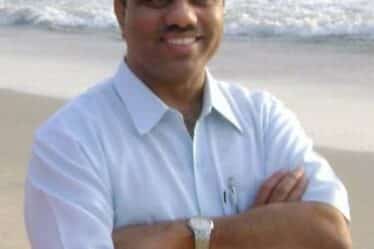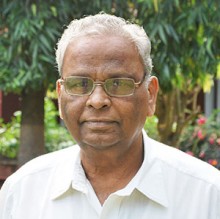Dr. Manu Kothari, father of Vatsal Kothari (alumnus, MGIMS, 1985 batch and currently critical care specialist, Kokilaben Ambani Hospital, Mumbai) and emeritus Professor of Anatomy at the Seth GS Medical College, Mumbai died yesterday morning in Mumbai. He was 79.

An unorthodox teacher and widely respected medical iconoclast, Dr. Kothari was well known for very thought-provoking and disturbing books he wrote:The Nature of Cancer and Cancer: Myths and Realities of Cause and Cure (1979), The Other Face of Cancer (1994) and Living and Dying (1996). And in his books he exposed the myths of modern medicine and taught the audience to live fearlessly, to love cancer unconditionally and to embrace death, passionately.
All through his life, his words gave a new meaning to why, where, what, when and how of cancer. Cancer, the giant killer, has been labelled as the ‘The Emperor of Maladies’, but not in Dr Manu Kothari’s world. He would show to the audience the kind face of cancer and argued that instead of needlessly fighting with cancer, and struggling to endure therapies that create false hopes, we must befriend cancer and learn to live with cancer. A bundle of energy and a source of inspiration and awe for most youngsters he met, Manubhai was a master entertainer, educator and displayed a rich repository of information. Well-read, widely travelled, he would enthral the audience with quotations from history and possessed a wonderful sense of humour.
Dr Kothari would often lament that the medical practice today was almost completely dominated and dictated by technology and therefore there was no science left to it. In an informal discussion at Sevagram, Manubhai once said, “I am a teacher, and so I’ve got to teach my students. And I often think of my role. What is my role here? And what is my task? The task of any teacher is to take the student to the outer limits of knowledge and to the beginning of his ignorance.” For over forty years, his classrooms, labs and dissection halls followed some cardinal principles: On the first day, the student must learn to have a healthy disrespect for the three T’s: Teacher, what is Taught and the Textbook. And towards that end he would encourage them to take an oath which read, “here I have come not to worship what is known, but to question! He always said, “Be sceptical to everything that your teachers and seniors say, take everything with a pinch of salt and do not hesitate to question, question and question!”
Much before Aamir Khan showed how playful classrooms could be, Manubhai had dreamed of classrooms where the medical students would sing and dance while dissecting human bodies in the dissection halls of the medical schools. And in his classes, full of rich insights from history and very interesting anecdotes, he would inject humour, fun and passion and real joy of learning in the impressionable young brains.
Manubhai wrote extensively on death and lamented that the medical profession has medicalized the death. “Most people die a very technical-sterile and lonely death in an intensive care unit of a hospital- away from their loved ones. The fear of death and dying constitutes the gravest disease of our time, “he often said,” We need to teach people to love and embrace death, not fear it”, he passionately reasoned. The dread of dying, particularly from illness, is an attitude promoted over the centuries by doctors, drug companies and device and equipment manufacturers. Medical profession, he mourned, has vastly been successful in converting perfectly healthy and normal human beings into sick and worried patients- thanks to the onslaught of technology-driven medicine that the medical profession has started practising.
Manu Bhai paraphrased the popular Raj Kapoor number to describe what the doctor should be all about: “मरीज की मुस्कराहटों पे हो निसार, मरीज़ का दर्द मिल सके तो ले उधार , मरीज के वास्ते तेरे दिल में प्यार, डॉक्टर इसी का नाम है। ” – a song he would often sing when lecturing on healthcare practices.
In his book that he co-authored with Dr. Lopa Mehta, Living Dying, he explained what life and death are all about. His life aptly symbolises the paragraph that he wrote in this book, “They had not lived enough, never having lived at all. And those who can’t live well, can’t die well, for dying is the last act that the living perform. Life and death are not absolute experiences belonging to separate categories, but are just two sides of the same reality, the seemingly polar opposites that are but parts of a single, larger whole. A good death, a happy one at that, then, is a crowning glory to a good, happy life.”
And Manu Bhai died exactly the way he wanted to die- a night before he was here, a day after he was there. And the final journey was as peaceful and as serene as he wanted to be.

